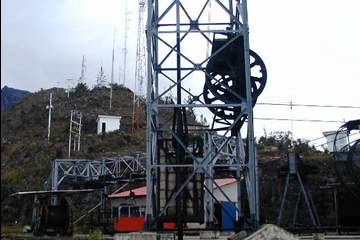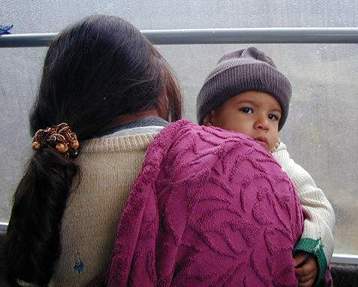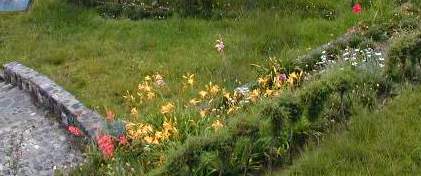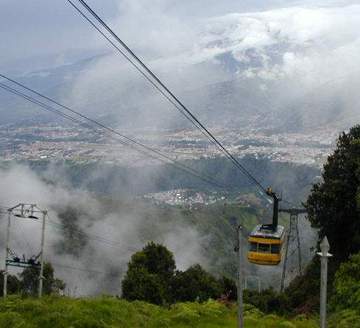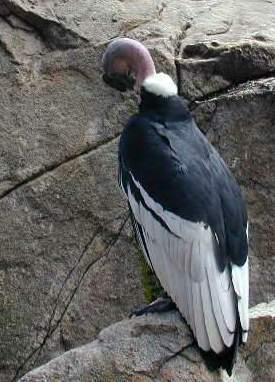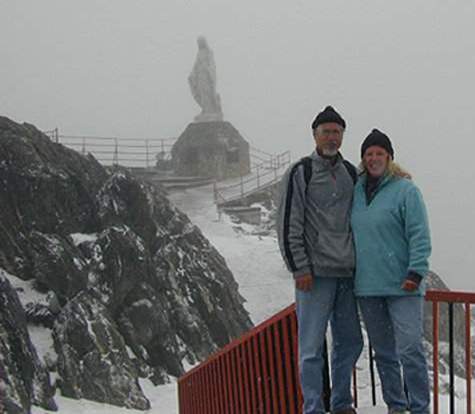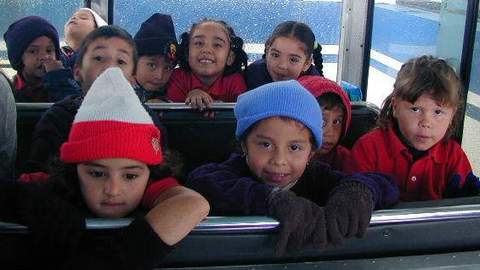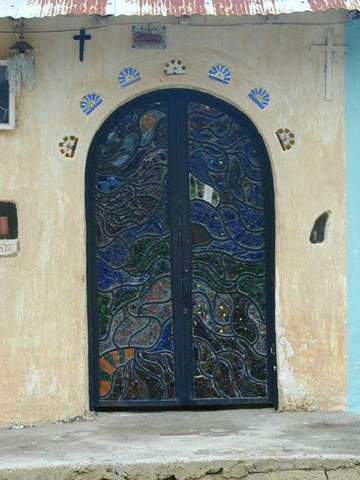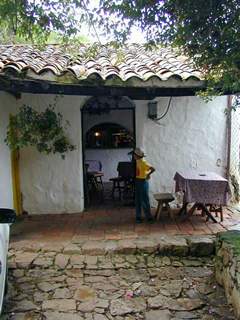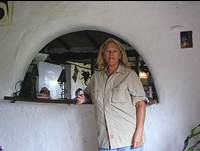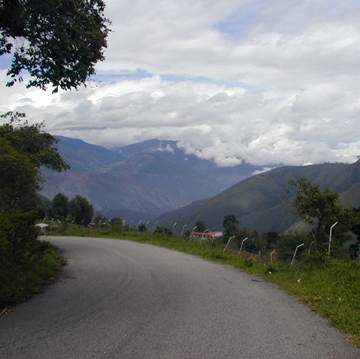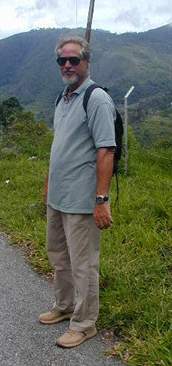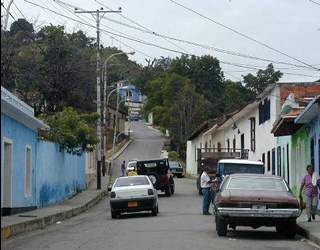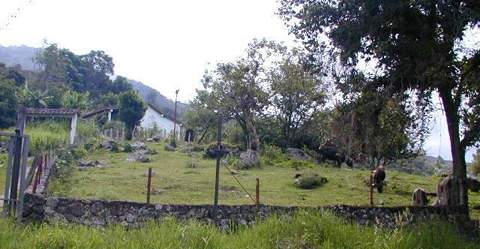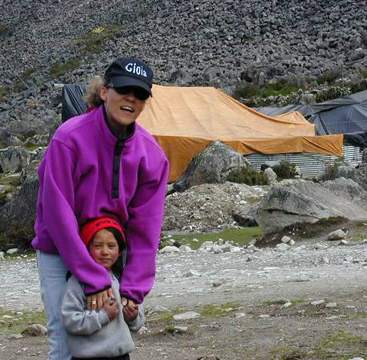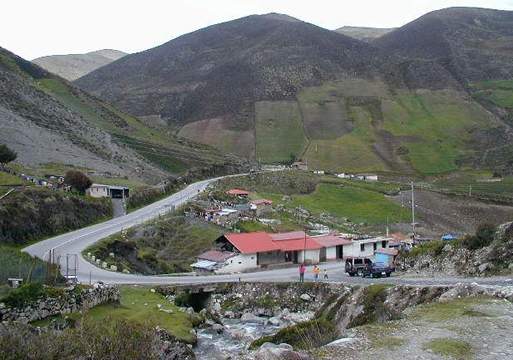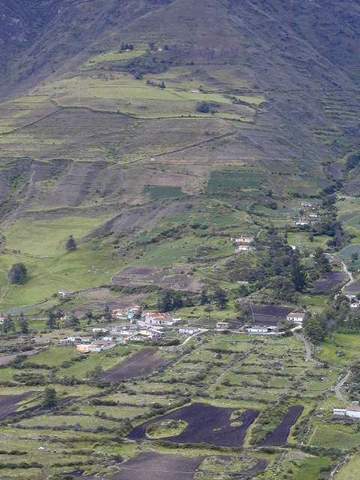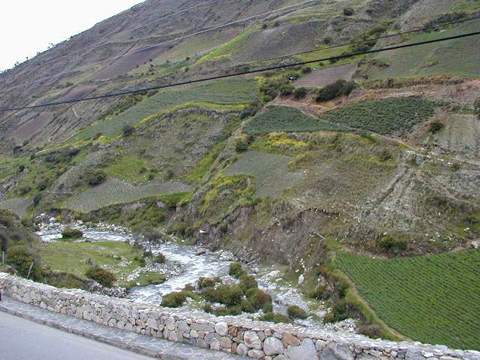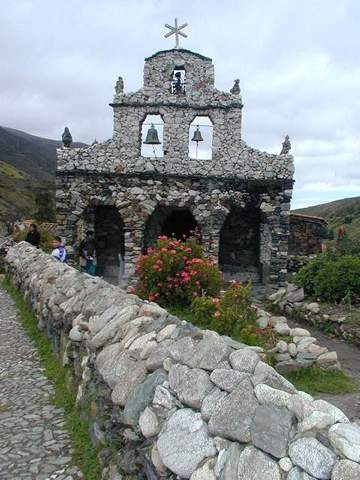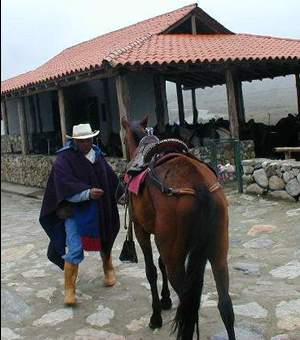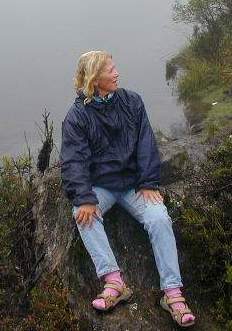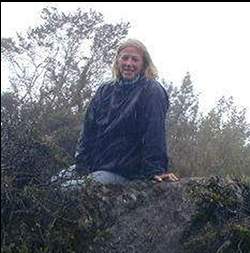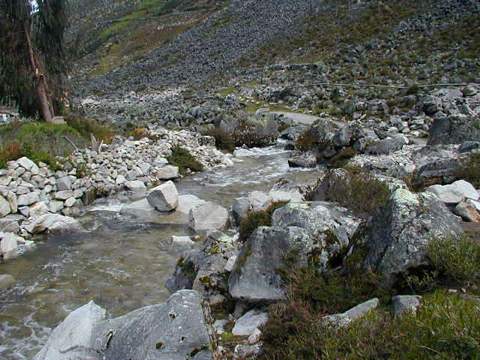Adventures aboard SV/Thaleia
|
The Andes |
| We spent several weeks in Mérida, and one of our first adventures was to ride the cable car to the top of the mountain. The Teleférico is the world's highest and longest cable car ride. Constructed in the late 50's by a French company, it stretches 12.6 kilometers from Mérida (altitude: 1577 meters) to Pico Espejo (altitude: 4765 m) which is just below the highest peak in Venezuela, Pico Bolívar altitude: 5007 m).
Before we put our bodies into the cable car, we inspected the works--everything was in order. | Another inspection at the top (Pico Espejo) showed remarkably well maintained equipment (whew!).
|
|
We sat in the second row of the cable car, right behind this gorgeous nińo. He remained suspicious throughout the ride to the top. |
The Andes is the home of the succulent frailesones which are just now (July) beginning to bloom. There are 87 varieties of these lovely mountain plants, and the hillsides are covered with them. They live for as long as 50 years, growing into stalks the size of small trees.
|
|
At the third station, the wild flowers were in full bloom, but there was already quite a nip to the air.
|
I'm cold......waaahhh....
|
| This is the cable car we're waiting for to take us to the very top of Pico Espejo. Behind the car is the beautiful city of Mérida, nestled between two mountain ranges on a 4500 foot high plateau. At about 10:00 in the morning, the clouds roll in and begin to obscure the view, so it's important to get an early start on the cable car ride
| . This condor has been raised in captivity, so we were able to get a closeup photo. His wing span is 3 meters, and he is absolutely majestic in flight. The condor feeds on carion, but has long been mistaken by local farmers as a bird of prey. Because of its underserved reputation, the condor has been hunted and is now officially classified as extinct; there are only 7 condors in Venezuela. Fortunately, there is an aggressive environmental and educational program underway to bring them back to the Andes. |
|
The Virgin Mary is perched at the top of Pico Espejo, just above the cable car platform. To the right is John on the icy walkway--it was too slippery to go to the top, and the air is very thin, especially for us sea-level dwellers. |
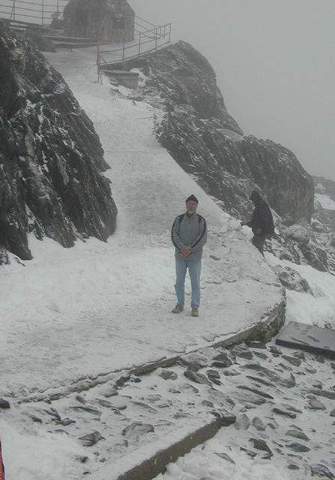 |
|
On
the way down the mountain, we got to accompany these kids on their school field
trip. | |
| Our second excursion into the mountains was a hike to La Mesa de los Indios, a small pueblo frozen in time. There are many such pueblos that dot the Andean countryside; the people are friendly and life is traditional. The Plaza Bolivar is always at the center of town (by definition, all towns have a Plaza Bolivar), and the church is close by, usually on the square.
|
This is not a church, though it sure looks like a church door, doesn't it? |
| We
couldn't resist stopping on the way to La Mesa for a little refreshment in this
lovely Italian tavola, reputed to have great pizza. We promised to return to sample
the food.
The construction of this house (restaurant)is traditional. The walls are made from bales of straw that has been covered with stucco. The roof is made from bamboo like sticks laid over larger sticks (beams) and then it's covered with tar and then tiled.
|
The road to town....
|
|
The abundance of rocks in the fields makes building stone fences economical, and serves as a good muscle-building activity too. |
Nothing is wasted here....the tropical vegetation soon takes over. |
| Our next excursion was with Gioia, our friend and guide, who drove us to the Sierra Nevada national park to ride horses to the Laguna Negra.
Gioia with an Andina who lives at the condor information center with her parents and her brothers. Gioia takes them little candies when she visits with tourists. The Andinos have very rosy cheeks, according to Gioia, because they have more red blood cells than we sea-level dwellers do. It's one of the perks of living at high altitude--no need for blush powder! |
The Trans-Andean highway is an excellent road, well maintained, and provides easy access to the Andean sites. Notice the hillsides parcelled into farms. |
| On the way to the park, we saw the agriculture of Merida. All of the vegetables sold in Venezuela are grown on the hillsides in the Andes, and the fruits are grown in the lower altitudes where the climate is warmer. We were surprised to see the farms etched into the steep hills, and watched as the oxen worked the fields with the farmers in tow. Most farms still use oxen, as they are sure-footed and can easily negotiate the steep plots of land that must be tilled, planted and harvested.
|
Notice the patterns of rows on the different plots of land. Different crops require differing patterns, depending on how the land erodes and what kinds of root systems, etc., the plants have.
More lush farmland..... there is a faultline that winds through this Andean farm country that will certainly cause, someday, an earthquake on a grand scale. We're told that it's like living in California: you never know when the fault will rupture. |
|
The church below was the second church designed and built by the San Rafael architect Juan Felix Sanchez. The first church was built in a hamlet of El Tisure, a seven hour walk from San Rafael and not accessible by road, so few local people would brave the elements to get to it. Both churches were built entirely of stone; that is, the stones are stacked--there is no mortar or other materials holding it together. The architect and his wife are entombed here.
|
One of our horses is being readied by the stable owner for our 45 minute downhill amble to the Laguna Mucubaji.
|
|
The
lagoon was totally fogged over when we arrived, but within a few minutes, the
mist began to clear
(gratuitous photos for kids) | |
|
Our guide resting with our horses after the trip. Miguel walked with the horses, never slowing to catch his breath. At about 10,000 feet, we couldn't have walked far without stopping for a breather. |
Mountain streams are irrisistable when there is a camera nearby.
|
